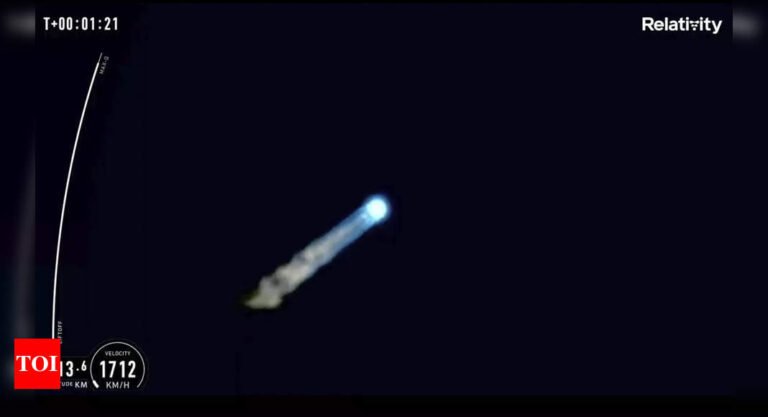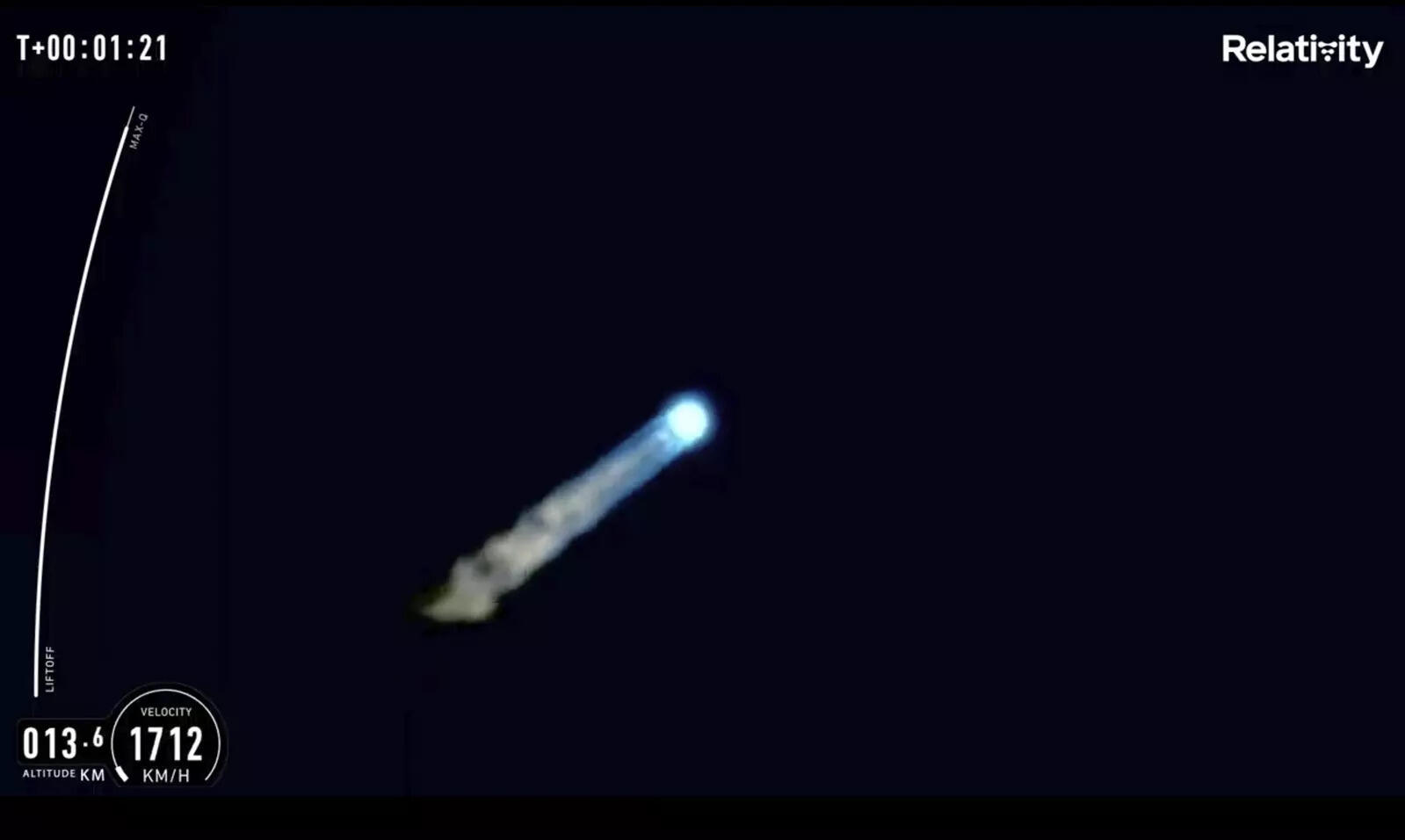
[ad_1]
WASHINGTON: The world’s first 3D-printed rocket launched efficiently on Wednesday, marking a step ahead for the California firm behind the progressive spacecraft, although it failed to achieve orbit.
Billed as less expensive to provide and fly, the unmanned Terran 1 rocket launched from Cape Canaveral, Florida at 11:25 pm (0325 GMT Thursday) however suffered an “anomaly” throughout second-stage separation because it streamed in direction of low Earth orbit, based on a livestream broadcast by aerospace startup Relativity Area.
The corporate didn’t instantly give additional particulars.
Whereas it failed to achieve orbit, Wednesday’s launch proved that the rocket — whose mass is 85 % 3D-printed — may stand up to the pains of lift-off.
The profitable launch got here on the third try. It had initially been scheduled to launch on March 8 however was postponed on the final minute due to propellant temperature points.
A second try on March 11 was scrubbed as a consequence of gas stress issues.
Had Terran 1 reached low Earth orbit, it might have been the primary privately funded car utilizing methane gas to take action on its first attempt, based on Relativity.
Terran 1 was not carrying a payload for its first flight, however the rocket will ultimately be able to placing as much as 2,755 kilos (1,250 kilograms) into low Earth orbit.
The rocket is 110 ft (33.5 meters) tall with a diameter of seven.5 ft (2.2 meters).
Eighty-five % of its mass is 3D-printed with steel alloys, together with the 9 Aeon 1 engines utilized in its first stage and the one Aeon Vacuum engine employed within the second.
It’s the largest ever 3D-printed object and was made utilizing the world’s largest 3D steel printers, based on the Lengthy Seashore-based firm.
Relativity’s purpose is to provide a rocket that’s 95 % 3D-printed.
Terran 1 is powered by engines utilizing liquid oxygen and liquid pure fuel — the “propellants of the long run,” able to ultimately fueling a voyage to Mars, Relativity says.
SpaceX‘s Starship and Vulcan rockets being developed by United Launch Alliance use the identical gas.
Relativity can also be constructing a bigger rocket, the Terran R, able to placing a payload of 44,000 kilos (20,000 kg) into low Earth orbit.
The primary launch of a Terran R, which is designed to be absolutely reusable, is scheduled for subsequent 12 months.
A satellite tv for pc operator can await years for a spot on an Arianespace or SpaceX rocket, and Relativity Area hopes to speed up the timeline with its 3D-printed rockets.
Relativity stated its 3D-printed variations use 100 occasions fewer elements than conventional rockets and may be constructed from uncooked supplies in simply 60 days.
Relativity has signed industrial launch contracts value $1.65 billion, largely for the Terran R, based on CEO Tim Ellis, who co-founded the corporate in 2015.
Billed as less expensive to provide and fly, the unmanned Terran 1 rocket launched from Cape Canaveral, Florida at 11:25 pm (0325 GMT Thursday) however suffered an “anomaly” throughout second-stage separation because it streamed in direction of low Earth orbit, based on a livestream broadcast by aerospace startup Relativity Area.
The corporate didn’t instantly give additional particulars.
Whereas it failed to achieve orbit, Wednesday’s launch proved that the rocket — whose mass is 85 % 3D-printed — may stand up to the pains of lift-off.
The profitable launch got here on the third try. It had initially been scheduled to launch on March 8 however was postponed on the final minute due to propellant temperature points.
A second try on March 11 was scrubbed as a consequence of gas stress issues.
Had Terran 1 reached low Earth orbit, it might have been the primary privately funded car utilizing methane gas to take action on its first attempt, based on Relativity.
Terran 1 was not carrying a payload for its first flight, however the rocket will ultimately be able to placing as much as 2,755 kilos (1,250 kilograms) into low Earth orbit.
The rocket is 110 ft (33.5 meters) tall with a diameter of seven.5 ft (2.2 meters).
Eighty-five % of its mass is 3D-printed with steel alloys, together with the 9 Aeon 1 engines utilized in its first stage and the one Aeon Vacuum engine employed within the second.
It’s the largest ever 3D-printed object and was made utilizing the world’s largest 3D steel printers, based on the Lengthy Seashore-based firm.
Relativity’s purpose is to provide a rocket that’s 95 % 3D-printed.
Terran 1 is powered by engines utilizing liquid oxygen and liquid pure fuel — the “propellants of the long run,” able to ultimately fueling a voyage to Mars, Relativity says.
SpaceX‘s Starship and Vulcan rockets being developed by United Launch Alliance use the identical gas.
Relativity can also be constructing a bigger rocket, the Terran R, able to placing a payload of 44,000 kilos (20,000 kg) into low Earth orbit.
The primary launch of a Terran R, which is designed to be absolutely reusable, is scheduled for subsequent 12 months.
A satellite tv for pc operator can await years for a spot on an Arianespace or SpaceX rocket, and Relativity Area hopes to speed up the timeline with its 3D-printed rockets.
Relativity stated its 3D-printed variations use 100 occasions fewer elements than conventional rockets and may be constructed from uncooked supplies in simply 60 days.
Relativity has signed industrial launch contracts value $1.65 billion, largely for the Terran R, based on CEO Tim Ellis, who co-founded the corporate in 2015.
[ad_2]
